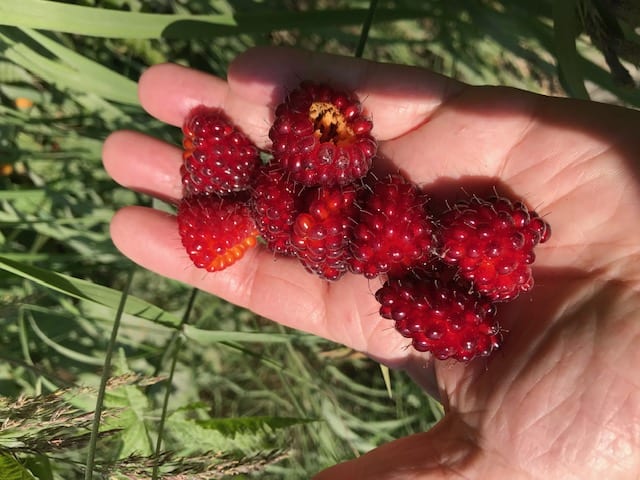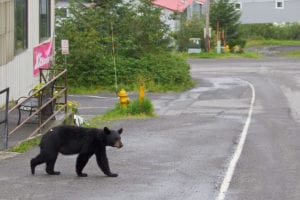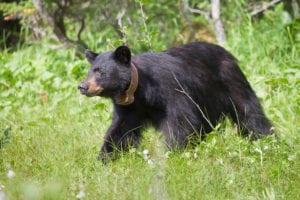
It’s been a very berry summer, and in fact, that’s likely why it has not been a very bear-y summer.
Remember last year: when bears, particularly of the black variety, seemed to be popping up all about town, knocking over trash cans, wandering down Main Street, zeroing in on the fish cleaning station at Hippy Cove, raiding chicken coops, and on more than one occasion, actually entering homes?
Before all the hungry bruins finally headed off to hibernate, a total of 32, mostly black, had been killed due to bear encounters, either in defense of life and property, or by authorities that had been contacted and ended up with no other options.
The previous record high was 11, back in 2007.
Discussions over this past fall and winter focused on ways to address the issue, with emphasis on improved handling of trash. The city installed bear-proof lids on dumpsters, and many individuals purchased bear-proof trash cans.
Yet it appears that Mother Nature, who likely created the problem with a distinct lack of salmonberries and blueberries last year, has solved it by providing an amazing bounty of the same this year.
“We don’t do berry counts,” said Charlotte Westing, area game management biologist for Alaska Department of Fish and Game. “But it appears that is one of the main differences between last year and this year.”

She added this anecdotal evidence: “I’m an avid berry picker, and last year, we ran out of berries in six months. This year that will not happen.”
Speaking of evidence, Cordova Police Chief Mike Hicks, in a brief chit-chat at the Post Office, mentioned that he could not recall a single phone call regarding bear problems so far this year.
Last year, the phones were ringing off the hooks at ADF&G, State Troopers, U.S. Fish and Wildlife, and the Cordova police offices. Authorities spent more time dealing with bears than with typical late-night summertime issues at various local watering holes.
Trying to educate folks about not creating bear attractions also became a major challenge, and stiff fines for improper storage of trash were considered by city government.
Meanwhile, in response to an unusual decline of black bears in western Prince William Sound, Westing and Milo Burcham of the U.S. Forest Service have been involved in a long-term study of black bear on Esther and Knight Island for the past three years. Signal-transmitting collars that reveal the locations of bears five times a day were installed on 27 bears on the two islands as part of their research.
Last year, the bears on Esther were seen to be wandering far from their typical home range, which surprisingly is usually only 1- to 2-miles in size.
“We noticed right away that a number of bears on Esther were traveling and have a hunch it was due to lack of food,” Burcham said. “What is strange that the same did not seem to be true for the bears on Knight Island.”
This spring, when checking on collars that were no longer moving, one dead bear that had lost significant weight was found. However, a necropsy is still in progress to determine if that was due to starvation or other issues.

Both Westing and Burcham were very cautious about drawing any conclusions about starvation resulting in a smaller bear population this year. Spring bear hunter-harvest reports are the only data available, and there is no other way to really count the population.
While the bear problem may have solved itself, Westing also mentioned that bruins will soon be going through a phase called “hyperphagia,” which means a surge in feeding to put on weight prior to hibernation.
“That usually occurs in September and October, so an uptick in bear activity may yet occur,” said said.
Westing was pleased with all the measures that have been taken to mitigate trash that might attract bears. “That may be part of the equation about so few bear encounters around town this year.”
So, there you have it. School is just underway, and so far, no calls about bears on the Mt. Eccles Elementary playground. Nor reports of bears wandering past the bank ATM machines or leaning on picture windows to peer in homes.
Seems awful quiet, doesn’t it?
From a bear-y year, to a berry year.
It’s a win-win.





